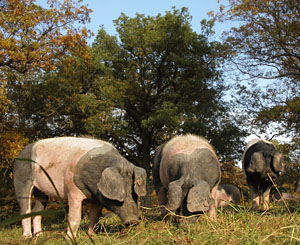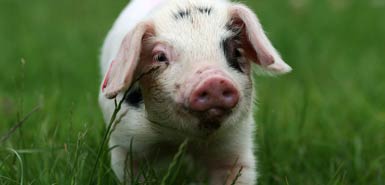Pork
So what will happen to pork prices?!
Related article: Commercial pigs in Ind. test positive for H1N1 (AP)
(NaturalNews) The pork industry desperately wants you to believe “the Big Lie” about swine flu: That it can’t infect pigs, and therefore it’s perfectly safe to buy and eat lots and lots of pork products.
It’s a merry little tale, and it would be a nice little piece of information to pass along if only it were true.
But it isn’t.
H1N1 swine flu can and does infect pigs. And the safety margin for eating pork products from H1N1-infected pigs is not well known.
In fact, the USDA just confirmed H1N1 infections in commercial pigs (the kind used to make those pork chops you ate for breakfast). This is the first time that a commercial herd of pigs has been publicly acknowledged to be infected with H1N1 swine flu by the USDA. (And we all know from watching the USDA’s behavior on mad cow disease that the agency goes to great lengths to downplay any such reports…)
The timing of the announcement is, not surprisingly, highly suspicious. Just a few days ago, the USDA negotiated an end to the pork import ban placed on U.S. pork products by China. Before the ink on that agreement was even dry, the USDA — surprise! — announced they had discovered this H1N1 infection in commercial swine in the U.S.
This particular commercial herd of swine was located in Indiana. (The USDA isn’t saying where.) But here’s the best part: The USDA did not ban those pigs from being used in the food supply! At least I couldn’t find any such report after scouring the web looking for one. This means these swine flu infected pigs could end up on your dinner table (if you eat pork, that is).
This isn’t the first report of H1N1 infecting pigs in the USA, by the way. A few weeks ago, H1N1 infections were confirmed in show pigs at the Minnesota State Fair. Nobody seemed to care, since people weren’t planning on eating those show pigs (“Looks good on stage, but tastes even better on the plate!”), but now that H1N1 has been found in commercial herds, suddenly things seem different.
Read moreUSDA report: H1N1 swine flu infects commercial swine in USA






